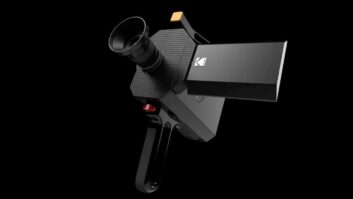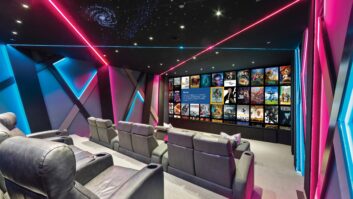New York — Check-out aisles in supermarkets and drug stores across the country are one of the last redoubts of the declining film business, and one of that business’ marquee brands is loathe to surrender that hard-won retail real estate in the wake of the digital onslaught.
Kodak’s counter-offensive took the form of a recent deal with flash-memory company Lexar Media that will see the Fremont, Calif.-based company exclusively supply and distribute a full line of Kodak-branded flash memory cards into the mass market channels where Kodak film is currently dangling from store pegs.
Lexar’s sales VP, Tim Sullivan, outlined the strategic benefits of the recent partnership at a press briefing, here.
According to Sullivan, Kodak has nearly 300,000 retail outlets selling its analog film and wants to transition them over to “digital film.” Kodak currently sells its own branded flash memory cards, supplied by several vendors, in a limited number of stores, most notably Wal-Mart. The company will cease those relationships, and Lexar will assume full responsibility for assembling and distributing the cards, Sullivan said.
Both companies will promote the product line.
“Kodak wanted to be in film again,” Sullivan said. “Now that digital cameras have become a mass market product, it makes sense for Kodak to offer their customers ‘digital film’ where they were accustomed to buying their traditional film,” he added.
“They have that yellow packaging on so many store pegs, but they realized that the film business is in decline,” Sullivan said.
The market for flash memory has matured to the degree where Lexar can offer 32MB and 64MB flash memory cards at “mass consumer retail price points,” which become even more compelling when paired with the Kodak brand, Sullivan said.
The 32MB and 64MB capacity Kodak-branded cards will sell for $15 and $30, respectively. The packaging will borrow a technique first adopted by rival SanDisk in its “Shoot and Store” line of mass-market flash memory cards, promoting the cards with the number of photos the cards can store, much as film is advertised by the number of exposures it can take.
In Lexar’s case, they will also advertise the capacity, as well as a disclaimer, on the front that the advertised number of photos is taken with a 1-megapixel camera. SanDisk only advertises the number of photos a card can hold and not the card’s actual capacity. It does not include the 1-megapixel caveat on the front of the packaging. Instead there is a chart on the back of the package that identifies the number of photos the card can hold according to the resolution of the camera.
It is the avowed hope of both flash memory manufacturers that consumers will begin to treat the reusable flash memory card as a “negative” — storing their photographs on the cards permanently, thus creating a flash memory consumables market. Sullivan admitted that might be an overly optimistic scenario, given the card’s reusability.
According to Sullivan, the relationship was born of several strategic decisions. Kodak would have had to invest substantial sums to acquire the intellectual property and manufacturing to offer its own flash memory, whereas Lexar would have to invest millions in attempting to build its brand beyond the high-end photo specialty and professional photographer customers where it is most prominent.
Sullivan said Kodak was also attracted to its patented controller technology, which it wants to leverage to better integrate the cards within its EasyShare digital camera product family and its photo-printing enterprises.
Though details were sparse, Sullivan said the controller chip could permanently store customer metadata — such as the number and size of prints they prefer, the number of copies they make, etc. That could instantly be read by other Kodak devices and technology platforms, including the online processing site Ofoto and its Picture Maker kiosks to better personalize the customer experience.












